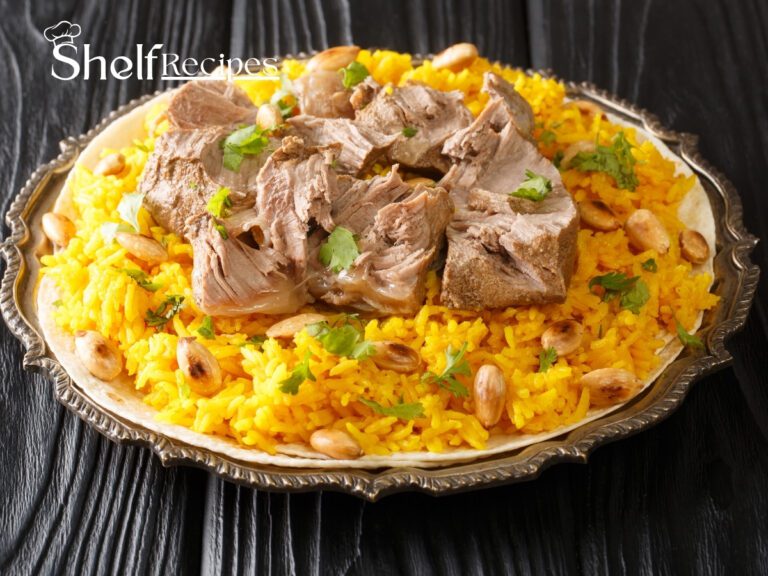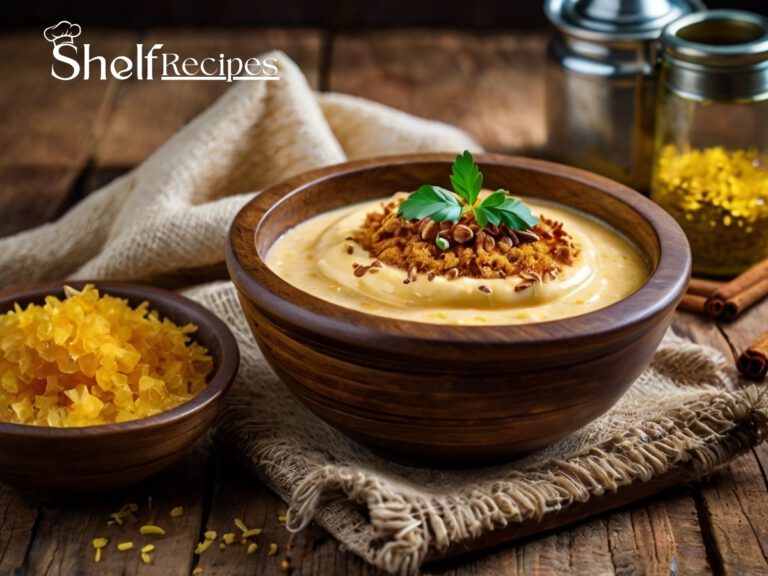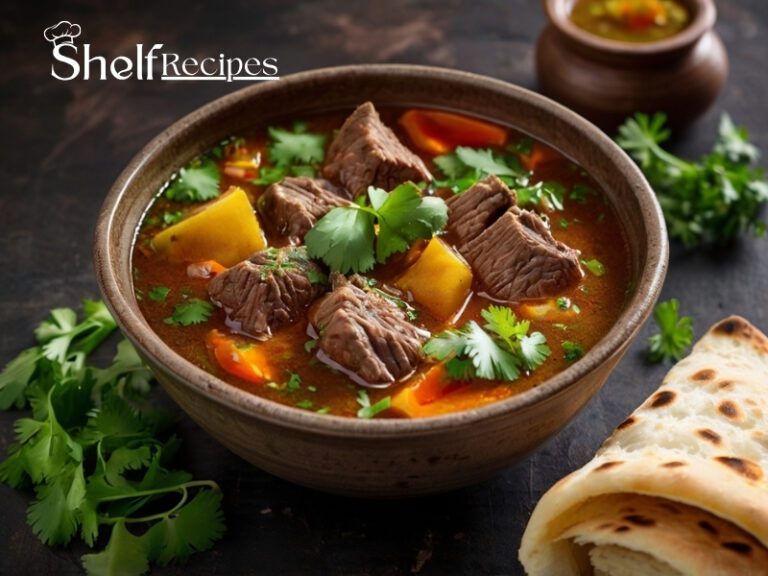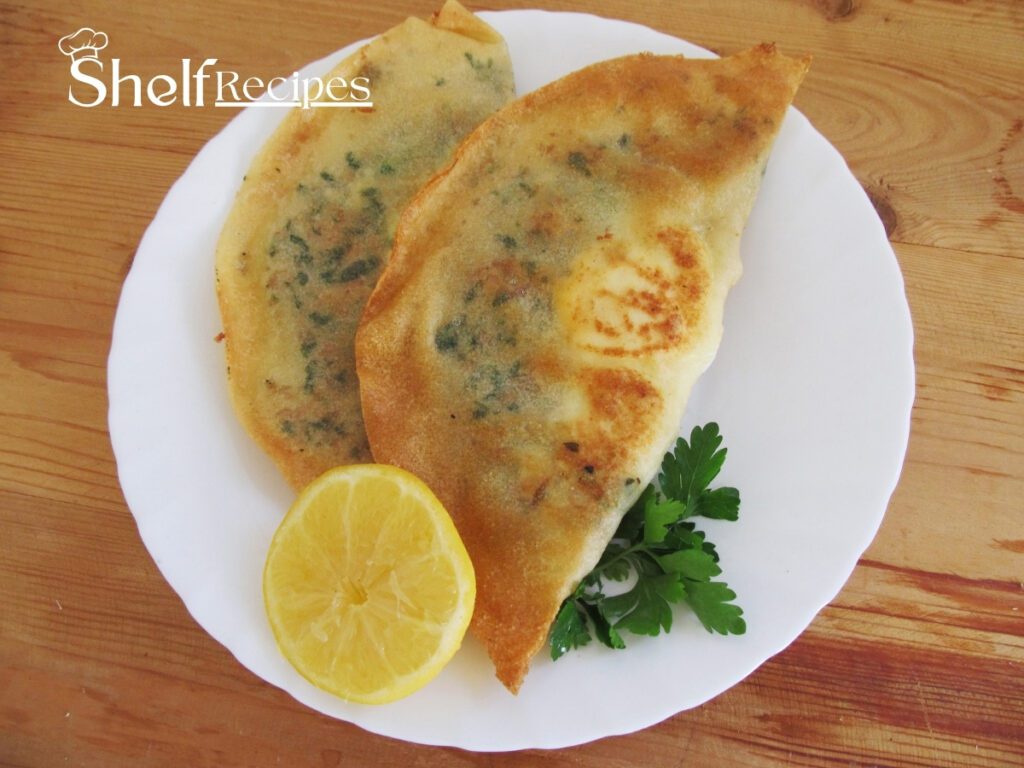
Brik is a beloved Tunisian street food, famous for its crispy exterior and flavorful filling. This golden, flaky pastry is traditionally stuffed with egg, tuna, capers, and parsley, then deep-fried to perfection. Whether enjoyed as an appetizer, a quick snack, or part of a Ramadan meal, Brik is a must-try dish that brings a taste of Tunisia to your kitchen.
What is Brik?
Brik is a beloved Tunisian fried pastry that showcases the country’s flair for bold, simple flavors wrapped in delicate Malsouka dough, akin to phyllo or spring roll wrappers. At its heart, the classic version encases a runny egg that bursts with richness inside a golden, crispy shell. However, adventurous fillings like tender seafood, savory minced meat, or melted cheese are equally cherished. A cornerstone of Tunisian cuisine, Brik shines during Ramadan as a satisfying iftar dish, offering a quick yet indulgent way to break the fast with a taste of tradition.
For more info check this article.
Historical Background of Brik
Origins and Evolution:
- Ottoman Influence:
- It likely traces its roots to the Ottoman Empire’s culinary legacy, brought to Tunisia during its rule (16th-19th centuries). The use of thin, flaky dough like Malsouka mirrors Turkish börek, adapted with local Tunisian flair.
- Local Adaptation:
- Tunisians transformed the concept by frying the pastry and adding a runny egg—a nod to the region’s love for bold, simple ingredients—making it distinctly North African over time.
- Street Food Rise:
- By the 19th century, it emerged as a popular street food in Tunisian medinas, sold by vendors as an affordable, portable snack for workers and travelers.
Significance in Tunisian Culture:
- Ramadan Tradition:
- Brik became a Ramadan staple by the early 20th century, prized for its quick preparation and hearty satisfaction after fasting, often shared at iftar gatherings.
- Symbol of Ingenuity:
- Reflecting Tunisia’s resourcefulness, it uses minimal ingredients to create maximum flavor, embodying the creativity of a coastal nation with a rich agricultural and fishing heritage.
- Festive Role:
- Beyond daily fare, Brik graces celebrations like weddings and Eid, served as an appetizer or snack, showcasing its versatility and communal appeal.
Historical Practices and Modern Legacy:
- Traditional Craft:
- Originally handmade, Malsouka dough was rolled paper-thin by skilled cooks, a technique passed down through families, though today’s versions often use store-bought wrappers for convenience.
- Culinary Exchange:
- Tunisia’s position as a Mediterranean crossroads infused Brik with influences from French (frying techniques) and Italian (seafood variations) cuisines during colonial periods, enriching its evolution.
- Global Spread:
- In the 20th century, Tunisian migration carried Brik to Europe and beyond, particularly France, where it’s now a beloved item in North African eateries, cementing its status as a cultural ambassador.
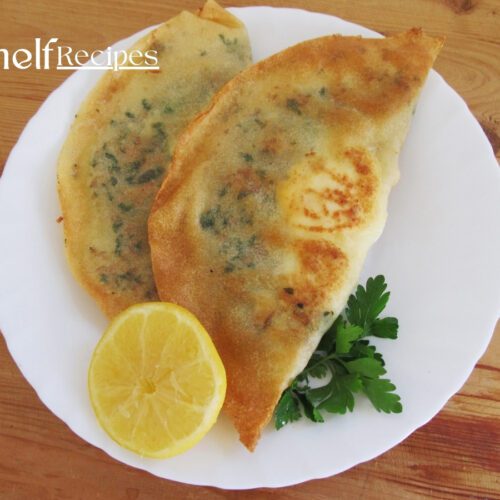
Tunisian Brik Recipe
Equipment
- Frying Pan or Deep Fryer For deep-frying the Brik to a crispy golden brown.
- Slotted Spoon To safely remove the Brik from hot oil.
- Mixing bowl For preparing the tuna and parsley filling.
- Sharp knife To trim the pastry sheets if needed.
- Kitchen Tongs For flipping the Brik while frying.
- Paper Towels To absorb excess oil after frying.
- Pastry Brush (optional) If baking Brik instead of frying, brush with oil.
- Baking Sheet & Oven (optional) For a healthier baked version.
- Cooking Thermometer (optional) To ensure the oil reaches the right temperature (around 350°F / 175°C).
Ingredients
Main Ingredients:
- 4 Malsouka or phyllo pastry sheets
- 4 eggs
- 1 can of tuna drained
- 2 tbsp chopped parsley
- 1 tbsp capers optional
- ½ tsp black pepper
- ½ tsp salt
- Vegetable oil for frying
Optional Fillings:
- Shredded cheese
- Minced meat pre-cooked
- Mashed potatoes
Instructions
Step 1: Prepare the Filling
- In a bowl, mix the tuna, parsley, capers, salt, and black pepper.
Step 2: Assemble the Brik
- Place a Malsouka sheet on a clean surface.
- Spread a spoonful of the tuna mixture in the center.
- Crack one raw egg over the filling.
- Carefully fold the sheet in half into a semi-circle shape.
Step 3: Fry the Brik
- Heat oil in a deep pan over medium-high heat.
- Gently slide the Brik into the hot oil.
- Fry for 1-2 minutes per side until crispy and golden brown.
- Remove and drain on paper towels.
Step 4: Serve and Enjoy!
- Serve hot with a squeeze of lemon juice or harissa on the side.
Nutritional Benefits
Well-Rounded Nourishment:
- Protein Power:
- The egg in classic Brik provides high-quality protein, essential for muscle repair and satiety, while seafood or meat variations boost this further with amino acids and omega-3s (in fish like tuna).
- Healthy Fats:
- Eggs and optional cheese supply beneficial fats for brain health and energy, though frying adds saturated fats, moderated nicely in baked versions with olive oil.
- Energy Boost:
- The Malsouka dough offers quick-digesting carbs, delivering an immediate energy lift, perfect for breaking the Ramadan fast or fueling a busy day.
- Vitamins and Minerals:
- Eggs bring vitamins B12 and D, plus choline for brain function, while fillings like parsley or potatoes add vitamin C, potassium, and antioxidants for overall wellness.
- Digestive Support:
- Spices like harissa (if used) contain capsaicin, which can aid metabolism and digestion, while lighter veggie fillings like spinach or potatoes provide fiber for gut health.
- Bone Strength:
- Cheese options like feta or ricotta contribute calcium and phosphorus, supporting strong bones and teeth, especially in vegetarian versions.
- Satisfying Texture:
- The combo of crispy dough and soft filling promotes fullness, helping control appetite—a bonus during iftar when balanced eating is key.
- Antioxidant Edge:
- Harissa or chili flakes offer anti-inflammatory compounds, while herbs like parsley fight oxidative stress, enhancing Brik’s health profile.
- Customizable Nutrition:
- Baked rather than fried, Brik cuts calories and fat, while veggie-heavy fillings increase fiber and micronutrients, tailoring it to diverse dietary needs.
- Mood Lift:
- The protein and carbs together support serotonin production, offering a subtle mood boost—ideal for the communal joy of sharing Brik at gatherings.
Why this dish is a Must-Try Tunisian Dish
- Quick & Easy:
- Whip it up in just 15 minutes—ideal for busy evenings or spontaneous cravings, making it a practical yet delicious choice.
- Crispy & Flavorful:
- The contrast of crunchy, fried pastry against the soft, oozing egg (or other fillings) delivers a texture and taste sensation that’s pure bliss in every bite.
- Versatile:
- Tailor it to your palate—whether you crave the classic egg, a seafood twist, or a cheesy delight, Brik bends to your culinary whims.
- Cultural Charm:
- Beyond its taste, Brik embodies Tunisia’s street food spirit and communal joy, making it a must-try for anyone seeking authentic North African flavors.
Serving Suggestions & Variations
For a Vegetarian Version:
- Potato Perfection: Swap the egg for mashed potatoes mixed with fresh parsley and a gooey cheese like mozzarella or feta, adding earthy depth.
- Nutrient Boost: Toss in some spinach or onions for extra vitamins and flavor.
For Extra Spice:
- Harissa Heat: Stir a dab of fiery Tunisian harissa into the filling or serve it on the side for a bold, smoky kick.
- Chili Flair: Sprinkle chili flakes inside or over the top for a customizable spice level that wakes up the senses.
For a Lighter Option:
- Baked Bliss: Skip the fryer and bake the Brik at 375°F (190°C) until golden, cutting oil without losing that satisfying crunch.
- Herb Infusion: Brush with olive oil and a sprinkle of za’atar before baking for a fragrant, guilt-free twist.
More Tunisian Recipes to Explore
If you love Tunisian food, check out these delicious recipes:
- Tunisian Harissa from Our Tunisian Table – A spicy chili paste perfect for dipping!
- Lablabi – A traditional chickpea soup bursting with flavors.
Final Thoughts
Brik is more than just a snack—it’s a symbol of Tunisian tradition and flavor. Whether you’re making it for Ramadan, a special occasion, or just to try something new, this crispy delight will impress.
Have you tried making Brik before? Share your favorite variations in the comments!
Don’t forget to check out more on our Ramadan recipes page from different countries!
